
August's Birthstones: The Dual Delights of Peridot & Spinel
The two traditional August birthstones are the stunning peridot and spinel. Peridot is a yellow-green gemstone while spinel comes in various colors, often mistaken for other gems.
The month was named August in 8 BC after Roman Emperor Augustus Caesar, chosen by him to commemorate his past triumphs during August. Previously, it was named Sextilis, meaning “sixth,” when March began the year.
Many ancient festivals held during August involved harvests, safety, and prayers for the changing season to be peaceful.
August is associated with abundance, protection, and regeneration. Many of these traits are seen in August birthstones, too!
Today, we’ll dive into the history, meanings, powers, and value factors of the August birthstones peridot and spinel. We’ll also touch on some alternative birthstones and gift ideas!
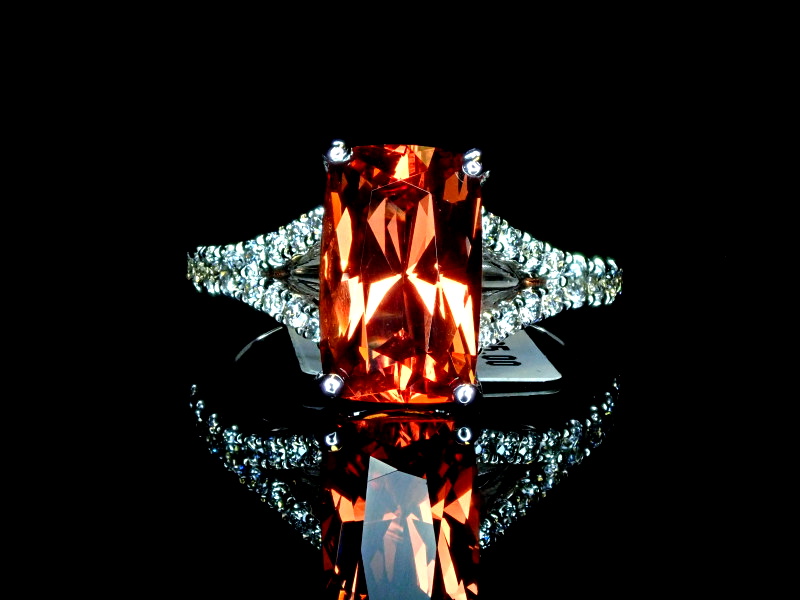 Pictured above: Orange spinel ring
Pictured above: Orange spinel ring
Historical & Cultural Significance of August Birthstones
Technically, August has three birthstones: peridot, spinel, and sardonyx.
Why are there 3 birthstones for August? For one, not all lists have three August birthstones. Secondly, birthstones have changed over time.
So, when did the August birthstone change?
Way back in the 1st and 5th centuries AD, early birthstone lists were inspired from Biblical lists of 12 gemstones. In these lists, the August birthstone was either carnelian or sardonyx.
Tiffany & Co released a pamphlet of birthstone poems in 1870 with sardonyx for August.
The first standardized list was created by the National Association of Jewellers (now Jewellers of America) in 1912. This list had sardonyx as the primary August birthstone, with peridot as an alternative.
In 1937, the National Association of Goldsmiths released a list with reversed priority — peridot primary, sardonyx alternative.
Later, the 1912 list was altered when the American Gem Trade Association collaborated with Jewellers of America. One of the changes was adding spinel for August in 2016.
That’s why we’ll focus on peridot and spinel in today’s guide.
With the birthstone history covered, we’ll dive into these gem’s individual history next.
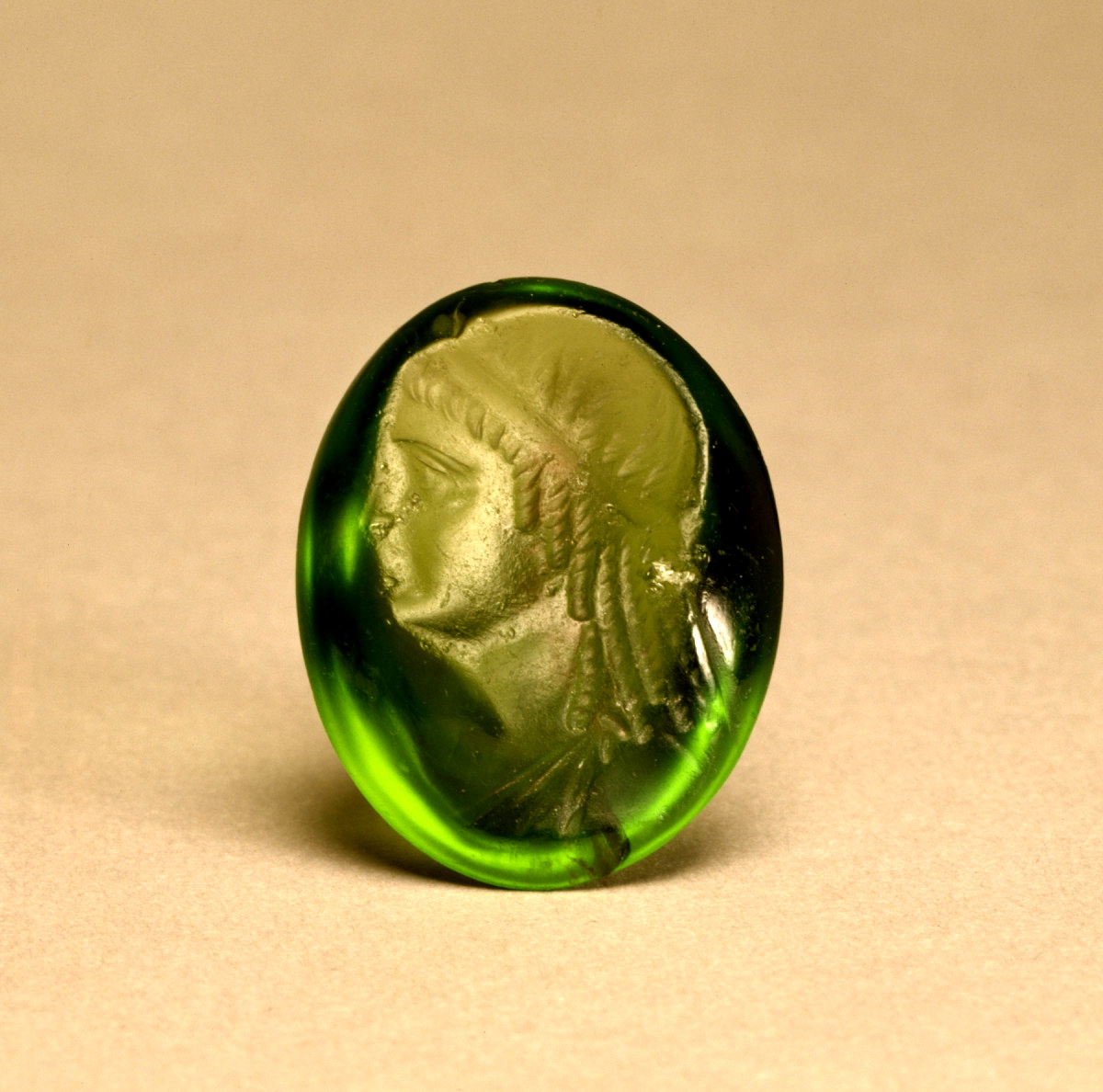 Pictured above: Peridot intaglio portrait of Cleopatra II, between circa 175 and circa 115 BC (Hellenistic-Ptolemaic) | Image credit: Walters Art Museum, Public domain
Pictured above: Peridot intaglio portrait of Cleopatra II, between circa 175 and circa 115 BC (Hellenistic-Ptolemaic) | Image credit: Walters Art Museum, Public domain
Peridot’s Rich History in Ancient Cultures
Peridot’s history begins in ancient Egypt.
The earliest records of peridot mining go back to 1500 BC, when ancient Egyptians found the August birthstone on Topazios (now called St. John’s Island or Zabargad).
Cleopatra believed peridot was protective against evil forces, and Egyptian priests drank from peridot-encrusted goblets to communicate with gods of nature.
Ancient Hawaiian legends connect peridot to Pele, the goddess of fire and volcanoes. Some myths say peridots are Pele’s tears. Others claim the birthstones are healing gifts from Pele.
Historically, peridot has been mixed up with many stones.
The early name “chrysolite” may be partly to blame. “Chrysolite” and “topaz” were used for chrysoberyl, peridot, and prehnite stones from Topazios.
Another centuries-long confusion was between peridot vs emerald.
In fact, ancient Romans called peridot “Evening Emerald.” Some historians believe Cleopatra’s emerald collection was actually peridots.
Other famous examples of peridots mistaken for emeralds include:
The 200-carat gems on the Three Holy Kings shrine in Germany’s Cologne Cathedral
French Empress Joséphine Bonaparte’s necklace gifted by her Emperor husband, Napoleon — Napoleon happened to be born in August!
Yet no gem takes the title of “imposter” more than spinel.
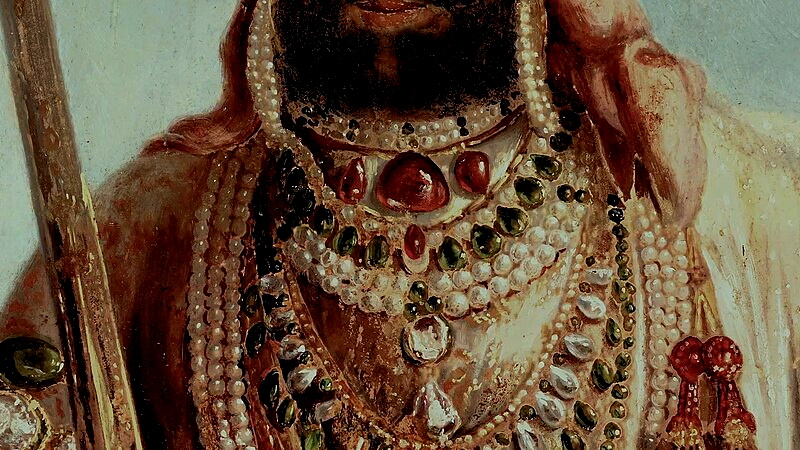 Pictured above: Detail of the Timur ruby from a painting of Maharaja Sher Singh, by August Schoefft, ca.1841–42 | Image credit: August Schoefft, Public domain
Pictured above: Detail of the Timur ruby from a painting of Maharaja Sher Singh, by August Schoefft, ca.1841–42 | Image credit: August Schoefft, Public domain
Spinel’s Intriguing Historical Connections & Confusions
Much of spinel’s history involves being mistaken for precious gemstones, particularly sapphire and ruby.
Historically, “ruby” was often used for all red gemstones. When imported rubies were introduced to Europe in the Middle Ages, spinels from Afghanistan were labeled “balas rubies.”
Until the 1800s, European royals were vying for “Balas rubies,” even though some medieval scholars categorized them as distinct from true rubies.
Notable examples of spinels mistaken for rubies are the Black Prince’s Ruby and Timur Ruby.
The Black Prince’s Ruby was first owned by 14th-century Granada prince Abu Said Faraj. Eventually, the “Black Prince” Edward of Woodstock got it. It eventually became the centerstone of the Imperial State Crown used at Queen Victoria’s 1838 coronation.
The Timur Ruby (pictured above) was named after Timurid ruler Timur, mistakenly believed to have taken it while invading Delhi in 1398. Ownership passed among various Mughal and Sikh rulers until the East India Company took it in 1849.
They gifted it to Queen Victoria in 1851. She had it set in a Garrards necklace in 1853.
Luckily, spinels have slowly gained recognition as beautiful gemstones and versatile August birthstones.
 Pictured above: Peridot rough with needle-like inclusions
Pictured above: Peridot rough with needle-like inclusions
Geological Marvel: The Origins of Peridot and Spinel
Starting with peridot, this August birthstone is a magnesium iron silicate and the gemstone form of olivine (sometimes called chrysotile).
Peridot is often found in peridotites. More notably, however, some peridot crystals are extraterrestrial, found in ancient stony-iron meteorites called pallasites and comet dust.
Today, most peridot crystals come from Arizona (USA), Myanmar, Pakistan, and Sri Lanka. Myanmar and Egypt produce the largest facetable peridots.
Moving on to spinel, this August birthstone is a magnesium aluminum oxide in the spinel subgroup of isometric aluminum oxides. Other stones in this group include magnetite and gahnite, but spinel is the only group member commonly used in jewelry.
Although spinels form in host rocks, miners usually find them in alluvial deposits, where water has eroded the rock and brought the gems downstream, often rounding the crystals along the way.
Spinel birthstones are found worldwide, but the main sources for gem-quality specimens are Afghanistan, Myanmar, and Sri Lanka.
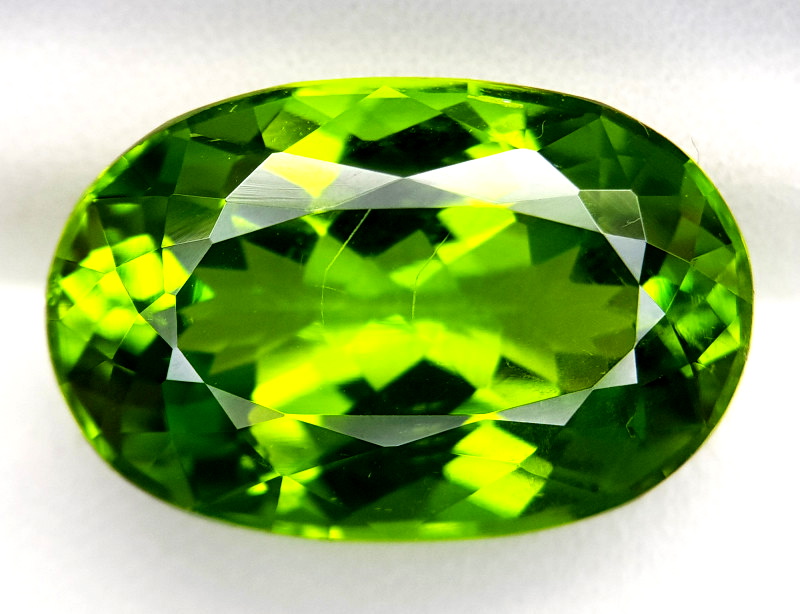 Pictured above: Faceted peridot gemstone
Pictured above: Faceted peridot gemstone
Shades of Green and Beyond: Peridot's Radiance
Peridot is one of few gemstones defined by its green coloring, but this August birthstone’s colors actually range from pure green to yellow-green to brownish-green.
Why is the August birthstone green? Peridot is idiochromatic, so its green coloring comes from the ferrous iron (Fe2+) present in its mineral formula.
Ferric iron (Fe3+) can lend yellow undertones, while chromium can brighten the green hues. The ideal iron content is 12 to 15 percent — anything higher leads to browner, less valuable colors.
Many peridot gems are identified by their origin:
Changbai, China: Bright lime green
Hunan, China: More yellow-green
Myanmar: Bright medium to dark green & oily
Sondmore, Norway: Paler lime-green
Kashmir, Pakistan: Apple- or lime-green, gold undertones
Zabargad, Egypt: Rich medium-green
As far as optical effects, peridots very rarely exhibit chatoyancy (the “cat’s eye” effect) or asterism (the “star” effect). Additionally, this August birthstone’s high birefringence can result in facet-doubling and fuzziness.
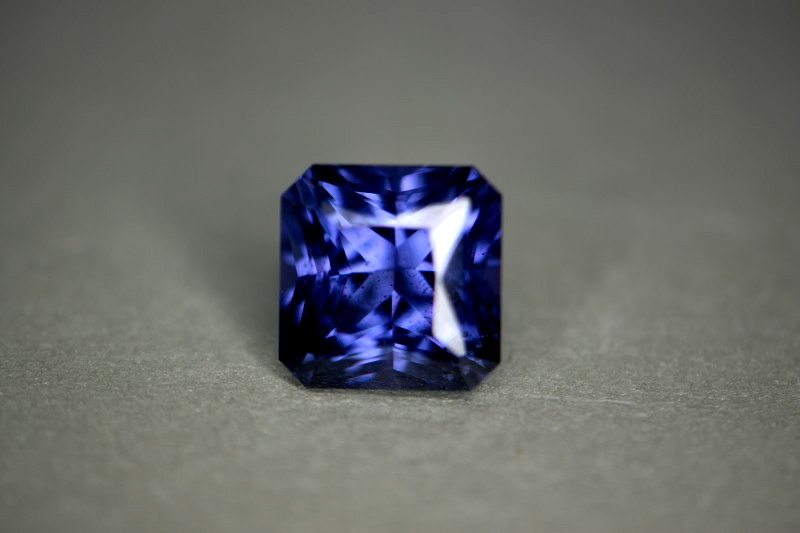 Pictured above: Faceted violet spinel
Pictured above: Faceted violet spinel
The Many Colors of Spinel
The spinel August birthstone colors are vast, including almost every color in the rainbow and shades in between. Most spinel gemstones are red, pink, orange, lilac, and blue.
The impurities behind this birthstone’s colors are:
Chromium, ferric iron, and/or vanadium – red, magenta, purple
Cobalt and/or ferrous iron – blue, bluish-purple, purple
Vanadium – orange, orange-red
Ferrous & ferric iron charge transfer – green
Magnesium aluminum oxide – black
Certain impurities and colors have led to different varieties and trade names — read more about these in our Spinel Info Guide.
Some Myanmar spinels display asterism. More rarely, spinels can be color-changing, from grayish-blue or violet in sunlight to purple or reddish-violet under incandescence.
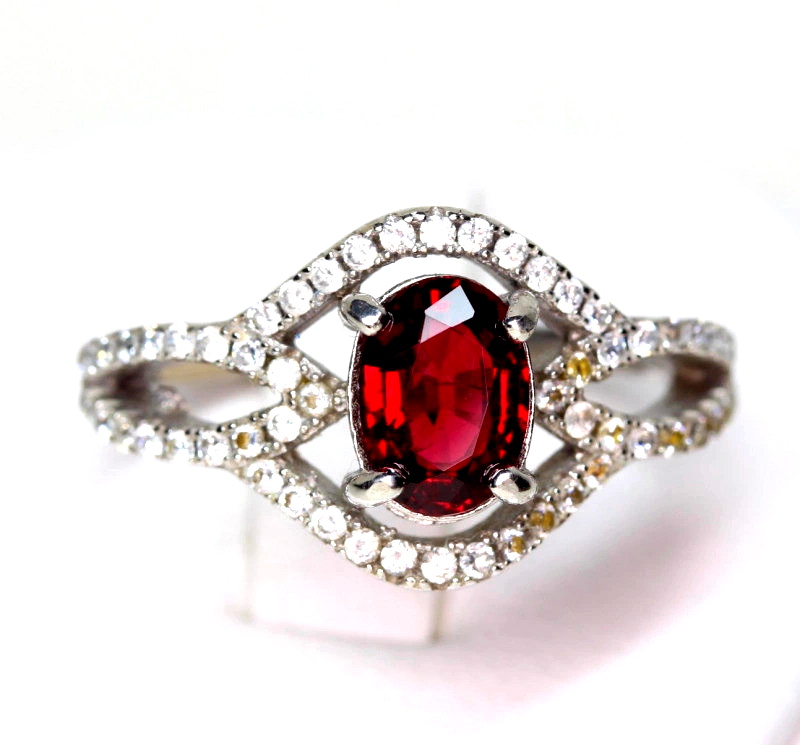 Pictured above: Red spinel ring
Pictured above: Red spinel ring
Evaluating Quality: Peridot and Spinel Characteristics
The quality of peridot and spinel birthstones is graded on color, clarity, cut, and carat weight, along with any treatments done.
Color
Peridot: Pure, vibrant grass-green peridots are usually most valuable, followed by moderately saturated yellow-green coloring. Yellow undertones are most common. Brown undertones lower value.
Spinel: In order, the rarest and most valuable spinels are red, cobalt-blue, bright pink, and bright orange.
More affordable (but still beautiful) options are shades of purple like lavender, bluish-purple, and violet. Higher saturation is rarer and more valuable.
Clarity
Clarity describes the degree of visible inclusions, which lowers a stone’s transparency and value. Both peridot and spinel have Type II clarity, meaning high-quality specimens are usually eye-clean (no visible inclusions without magnification).
Peridot: Under magnification, many peridot gems have “lily pad” inclusions, making the stone harder to cut. Fewer inclusions are ideal.
Spinel: Many spinels have intriguing, distinctive rows of octahedral crystal inclusions. Aligned rutile needles cause the valuable “star” effect.
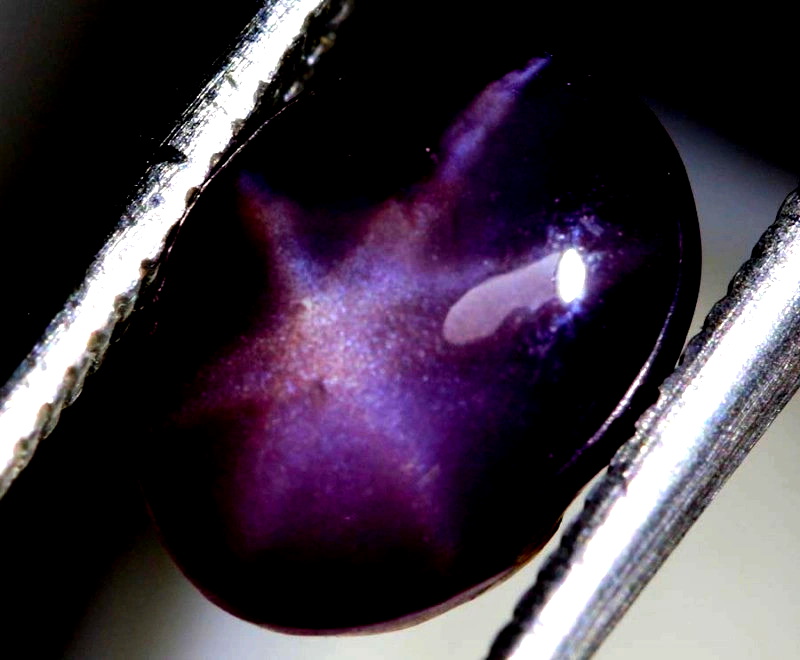 Pictured above: Purple star spinel cabochon
Pictured above: Purple star spinel cabochon
Cut
Most peridot and spinel August birthstones are faceted. Star or cat’s eye specimens must be cut as cabochons.
Peridot: Gem cutters must consider peridot’s birefringence, clarity, and color when choosing faceted cuts. Checkerboard cuts can mask inclusions, but round, pear, and oval brilliant shapes are most popular.
Spinel: The most common faceted spinel cuts are oval, round, and cushion shapes, which maximize spinel’s brilliance. High-quality spinel material may be cut into non-calibrated sizes.
Carat Weight
Peridot: Gem-quality peridot rough is rarely over 3 carats, with most gems under 1 carat. The price-per-carat for gems over 3 carats is significantly higher.
Spinel: Most spinels today are under 5 carats. Gems over 5 carats have significantly higher price-per-carat rates, especially blue, red, and pink spinels.
Treatments
Peridot: Treatments are rare for peridot, though some are metal-foiled to enhance color and durability.
Spinel: Most natural spinels are untreated. Rarely, some are heated and fracture-filled for better clarity. Various diffusion treatments may be done to create artificial colors like cobalt-blue.
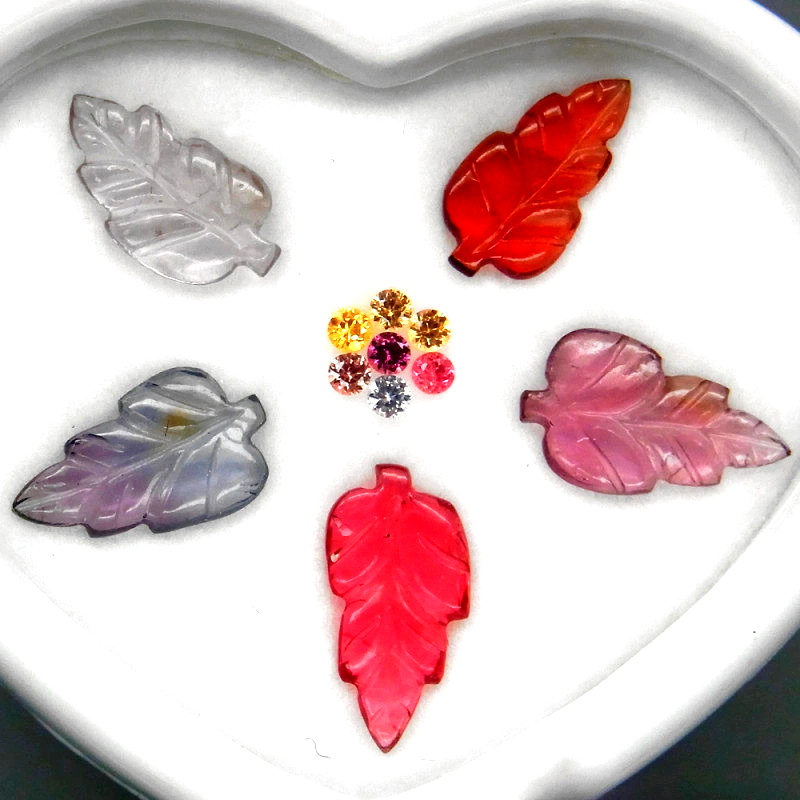 Pictured above: Carved spinels around faceted sapphires
Pictured above: Carved spinels around faceted sapphires
Cultural Significance and Beliefs
Peridot and spinel aren’t only beautiful — these August birthstones are also significant metaphysically.
Peridot
Historically, peridot was often connected to light and protection.
Ancient Egyptians called it the “gem of the sun,” and wore it as protection from “terrors of the night.” Some ancients thought peridot came from a solar explosion.
The 16th-century writer Heinrich Cornelius Agrippa claimed holding peridot to the sun would make it reflect a golden star that healed breathing problems.
Some believe peridot dispelled nightmares, madness, and memory loss. Others claim its “inner radiance” brought mental clarity and spiritual awareness.
Today, the peridot August birthstone symbolizes renewal, protection, and harmony.
Spinel
For spinel, this August birthstone’s meaning is tied to love and rejuvenation.
As healing stones, spinels are believed to promote passion, devotion, and happiness, along with decreasing anxiety and balancing emotions.
Metaphysical nicknames for spinel include:
Stone of Hope
Stone of Joy
Stone of Revitalization
Stone of Immortality
Spiritually, some use spinel for boosting intuition and communication with celestial realms. People in Myanmar say spinel crystals are nat thwe, meaning “polished by the spirits.”
The August birthstone is also used for opening the root chakra and re-energizing the wearer.
Ethical Sourcing and Sustainability
Rising awareness around conflict diamonds may lead conscious consumers to wonder about the ethics and sustainability of peridot and spinel mining.
Partial responsibility is on jewelers, who can choose to buy from smaller, independently owned and vetted mines who are transparent about their supply chain. The other responsibility is on buyers, who can choose to only buy August birthstones from vetted, transparent jewelers.
Luckily, roughly 80 to 95 percent of peridot gem material is exclusively mined by Apache tribe members on the San Carlos Apache Reservation in Arizona, USA, an independent operation open to visitors.
Many jewelers opt for spinels from Tanzania and Sri Lanka, where mining practices are transparent and not associated with human rights violations.
Many buyers have turned to synthetic versions of August birthstones, which have the same chemical and physical properties as natural material but are lab-created.
In fact, synthetic spinels are among the most common lab-created gems. Synthetic peridot is less common.
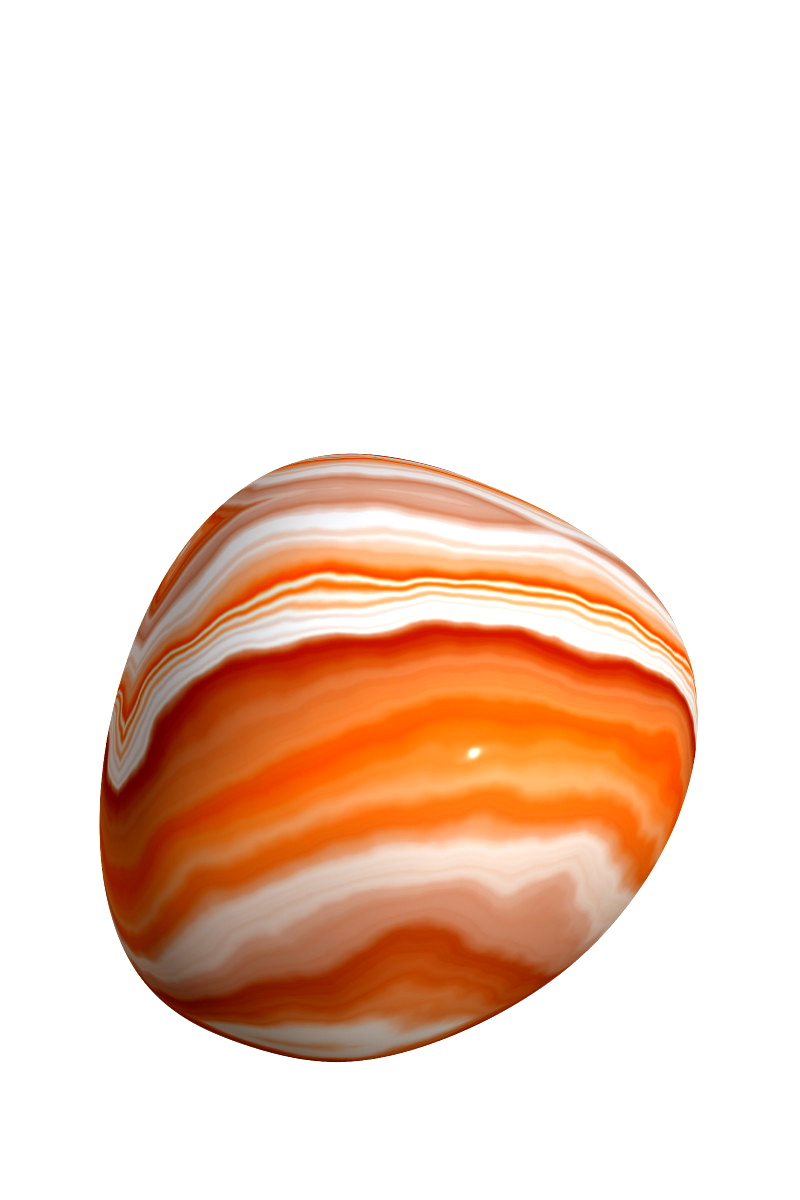 Pictured above: Sardonyx cabochon
Pictured above: Sardonyx cabochon
Alternative August Birthstones
As mentioned earlier, many lists include a third August birthstone, being sardonyx, a chalcedony variety comprised of sard and onyx layers, or carnelian, a similar chalcedony variety.
Spinel itself is often a simulant of other gems, but peridot has many affordable simulants, like:
Synthetic corundum
Prehnite
Astrologically, what is the birthstone for Virgo in August? Among the traditional birthstones, earth-sign Virgos may prefer a grassy-green peridot.
What is the birthstone for Leo? August-born Leos might prefer the passion of spinel, especially fiery red spinel.
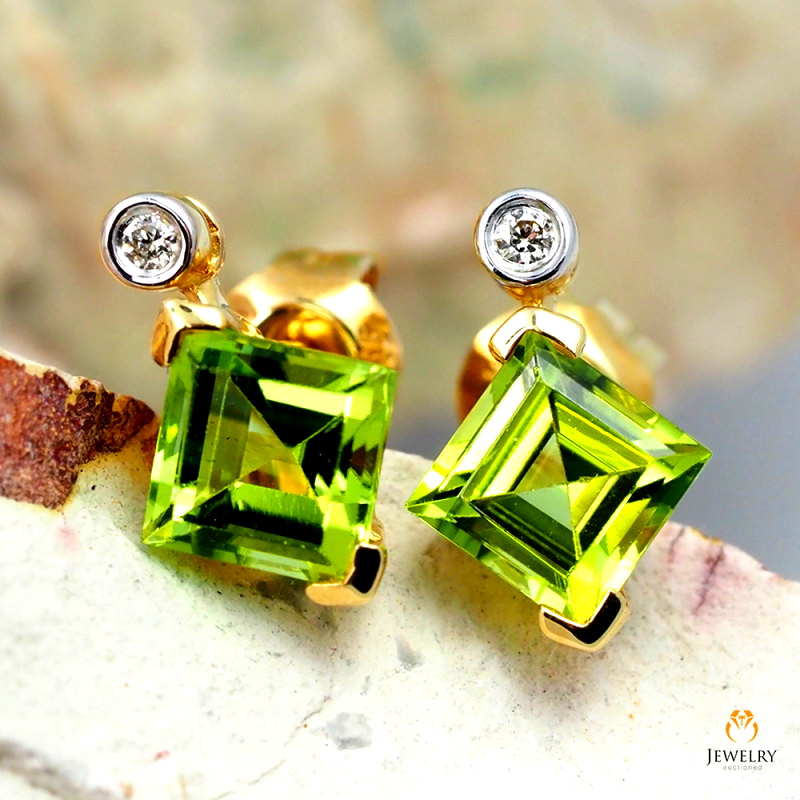 Pictured above: Faceted peridot earrings
Pictured above: Faceted peridot earrings
Personalized August Birthstone Gifts
An August birthstone gift is a thoughtful celebration of your loved one’s life. Once you choose the gem, it’s time to pick the best August birthstone jewelry or accessory for it.
Here are some ideas:
Stackable August birthstone ring
Birthstone necklace with monogram pendant of their initial
Tungsten ring with embedded birthstone
Stud birthstone earrings in their favorite shape
Carved birthstone decor
August birthstone keychain
What matters most is that your gift is meaningful and comes from the heart!
Which August Birthstone Do You Adore?
Spinel and peridot may seem different, but they’re more alike than you’d think. Both represent light and renewal, and both have been mistaken for other gems. Along with sardonyx, these August birthstones offer a range of possibilities for celebrating anyone born at the end of summer!
Find traditional and alternative August birthstones from our hundreds of gemstones available!
Search the Gemstone Encyclopedia
Related Auctions
Related Articles
Originally the Birthstones or gemstones were associated with a zodiac sign or the month of a individuals birth. Find out what your stone is and view the stones we have for sale
8th Feb 2021
Azotic treatment of Topaz and Quartz is a treatment that creates a layer of color over a gemstone. Learn more about this treatment and check out our stones fro sale.
8th May 2018
There are dozens of quartz and chalcedony gems with various colors and patterns. Learn all about quartz properties and every type of quartz, from amethyst and agate to plasma and phantom quartz!
15th Oct 2020
Latest Articles
Tantalite is a group of red, brown, or black minerals containing the rare and valuable element tantalum. Discover the uses, history, prices, and properties of tantalite gemstones in this guide!
11th Nov 2024
Hodgkinsonite is a very rare collector’s gemstone known for its vibrant pink or purple hues, only found in New Jersey, USA. Learn hodgkinsonite’s prices, history, properties, and traits in this guide!
9th Jun 2024
Canasite is a rare mineral usually found as greenish-yellow inclusions in charoite but also known as a purple gemstone. Learn canasite’s history, varieties, properties, and prices in this guide.
27th May 2024
Article Categories
How To's is where you will find helpful articles from gem Rock Auctions on how to cut gemstones, select gemstones and buy gemstones.
9 Articles




